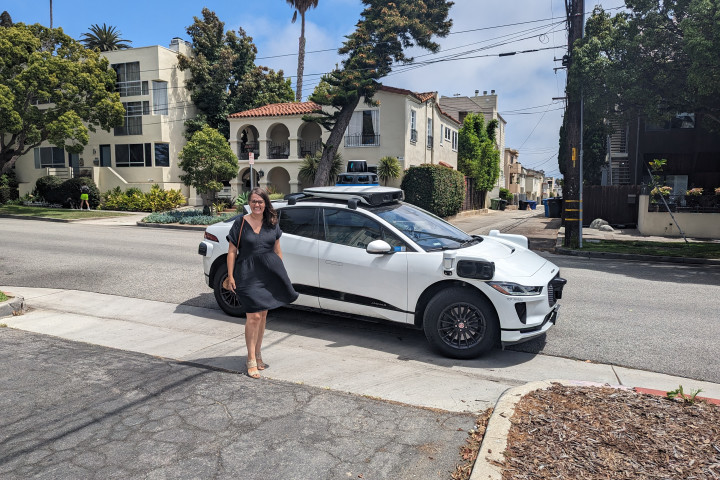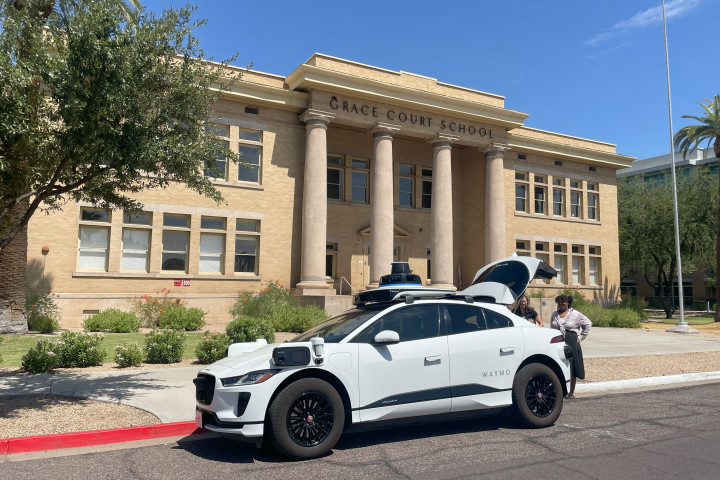Best Buddies Bonding: How Autonomous Vehicle Technology Connects People With Different Abilities
March 28, 2023
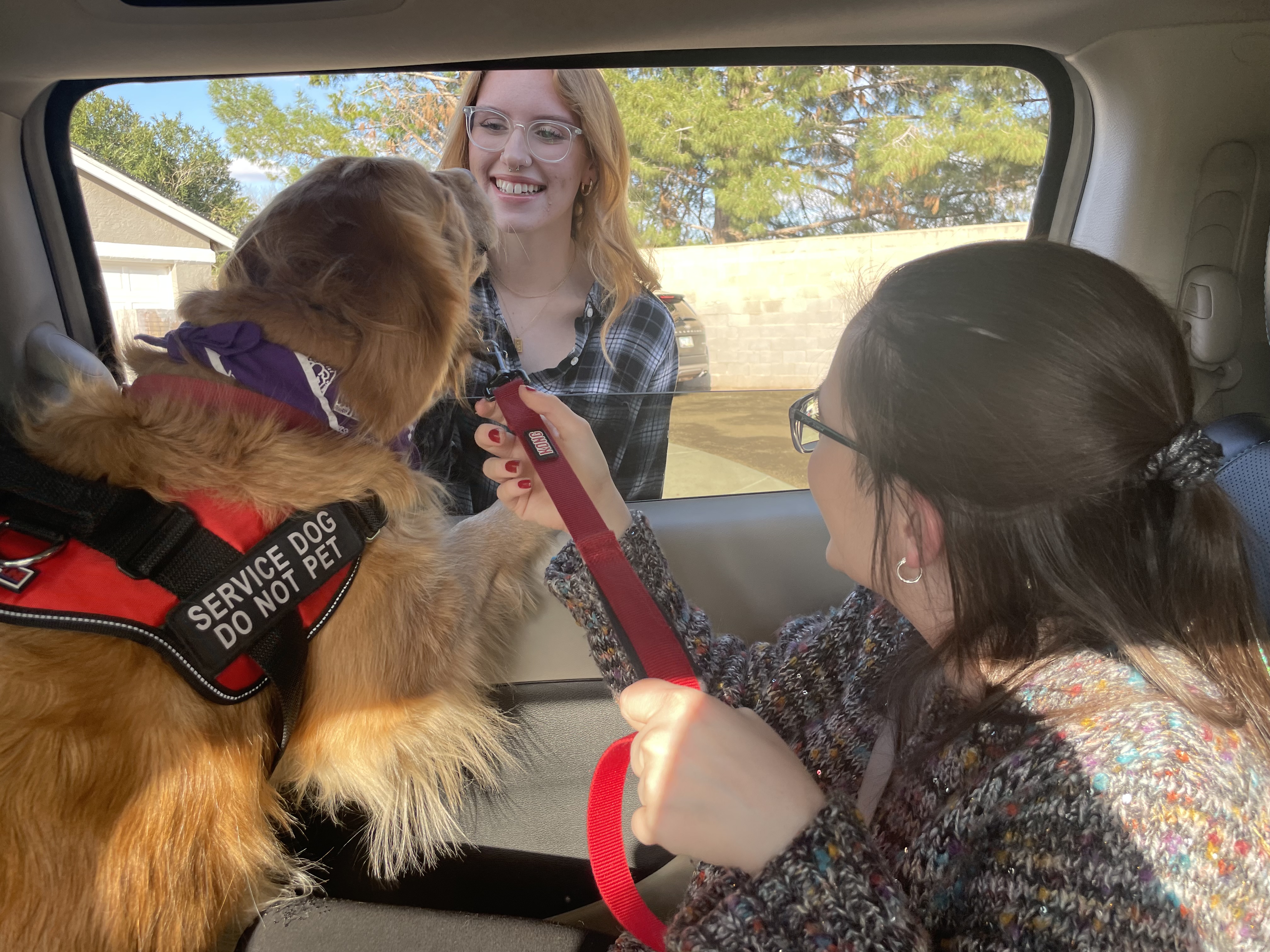
One spring day in Phoenix, Kelley arrived to pick her friend Katie up to go to dinner and she was beaming. This wasn’t just any ride.
Of all the places they’d gone in their years-long friendship - from dances to parades, movies, and even ax throwing - Kelley, age 20, had never been the one to give Katie, 18, a ride. Kelley is a person with a disability who does not drive. Katie is a volunteer with Best Buddies and Kelley’s buddy.
But on this day, Kelley was able to pick Katie up because she was in an autonomously driven Waymo One car, along with her golden retriever, Joie, a trained service dog.
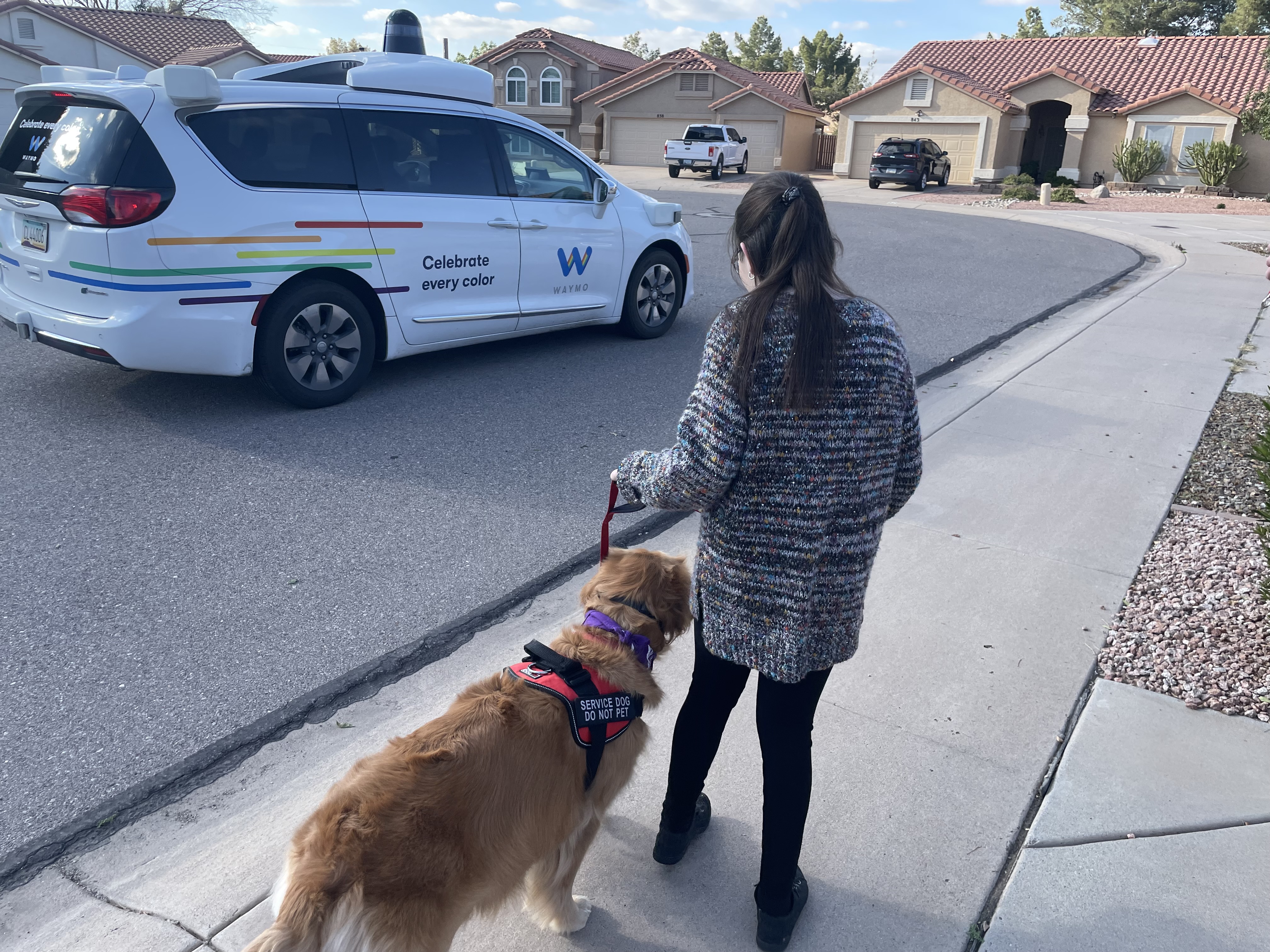
“When she rode up to my house, she had the biggest smile on her face,” says Katie. “Usually I go and pick her up so it was really cool to have her get to do that.”
The ride was made possible through a collaboration between the autonomous driving technology company Waymo and Best Buddies International, a nonprofit volunteer organization with chapters in every US state. Best Buddies facilitates one-to-one friendships between people with intellectual and developmental disabilities (IDD) and volunteers.
While on the way to dinner, Katie says she and Kelley kept commenting on how the technology, called the Waymo Driver, drove so smoothly.
“You could see the steering wheel turning and everything,” recalls Katie, who was Kelley’s high school Best Buddies buddy before becoming her Habilitation & Respite Provider through the state of Arizona. “It knew exactly when to change lanes and knew when to avoid the cars.”
Waymo’s technology is designed and equipped to drive safely by following road rules like speed limits and staying constantly vigilant about other road users and objects around the vehicle.
Katie, who has always looked to her buddy as a role model, is attending Mesa Community College with a goal to work with them full-time. She says the Waymo Driver could add a safe mobility option for people like Kelley, most of whom cannot drive and rely on friends and family to get them from place to place.
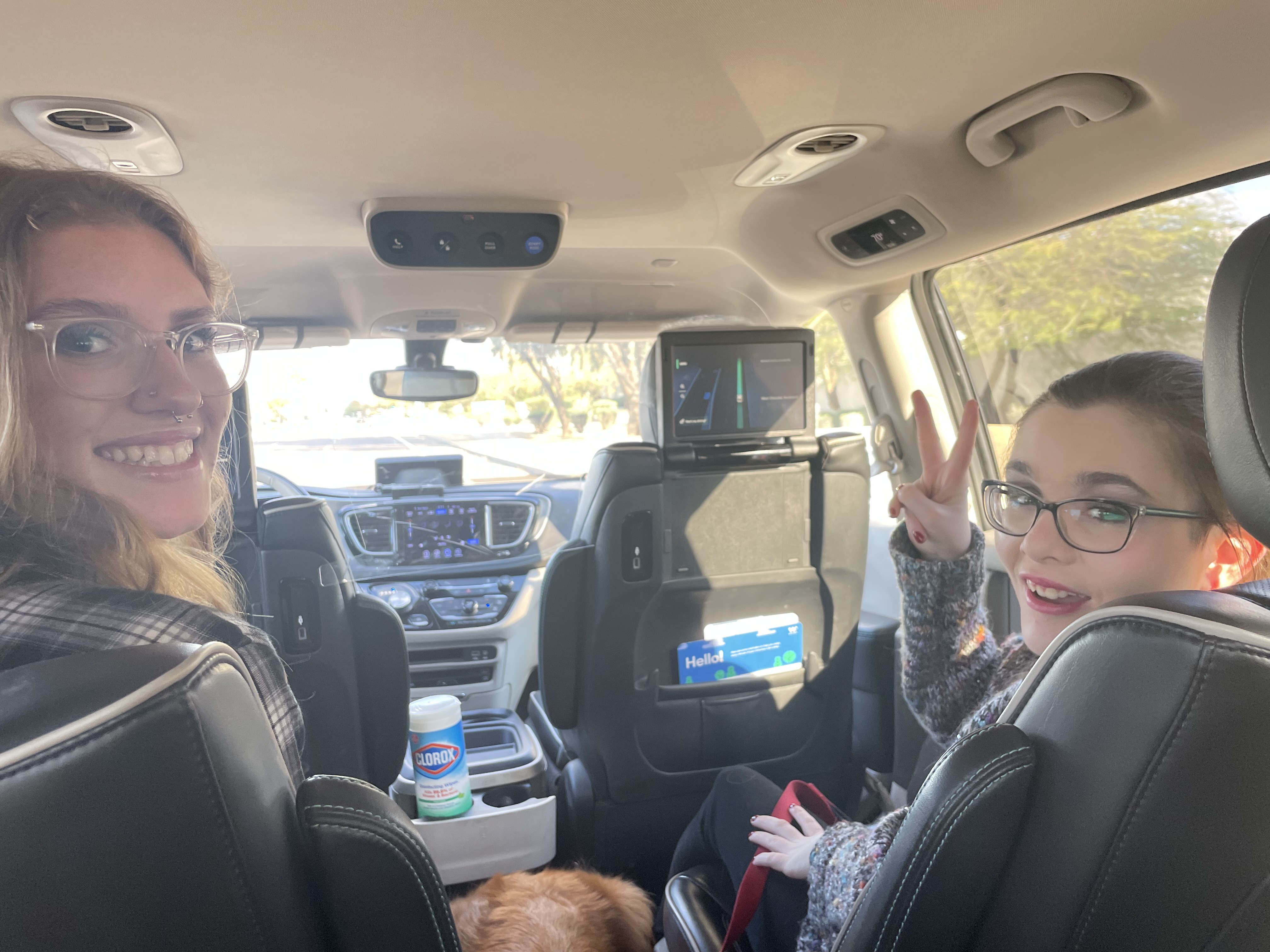
As in-car screen shows Waymo rider’s the vehicle’s path, as well as nearby objects and road features. Katie says Kelley loved that feature, adding that she thinks that the in-car audio and visual ‘prompts,’ will provide a sense of routine for people with IDD.
“A lot of times, I'll be with a buddy and they're like, ‘Okay, what are we doing now? Where are we going?’ And it's just really nice to have all of that laid out so I don't have to keep explaining,” Katie explains. “After I showed [Kelley our route] on the screen, she didn't really ask those questions anymore.”
Katie says she believes Waymo’s technology could expand independence for people with IDD.
“Kelley could have the option to come pick me up, or she could have the option to go where she wanted if we weren't able to drive her at the moment,” Katie explains.
Kelley’s mom, Karey, says she agrees.
“I don’t think people realize when you have somebody in your family that has a disability, that everything they do, you go with them,” says Karey.
I don’t think people realize when you have somebody in your family that has a disability, that everything they do, you go with them.
Karey says that she sometimes spends up to seven hours on weekend days driving Kelley. She says she can easily imagine how she would spend her time if she didn’t have to chauffeur.
“If I could get some way to lighten that load, think of how clean my house would be! Or gosh, I might even go get a manicure,” Karey shares. “I’d actually have time to cook something good.”
Lauren Amador, program manager for Best Buddies, says Waymo One could help connect the community to Best Buddies Arizona’s many events, ranging from dances to walks, fundraisers and galas.
“It allows participants who do not drive to have the chance to come to our events and meet up with their buddy while also knowing they will be safe and get there on time,” Lauren explains.
Lauren says many people with disabilities are not always comfortable with getting into a ride-share vehicle with an unknown driver. Family, friends, and paratransit services are not always available to provide rides either.
“I think [autonomous driving] will be huge for everyone,” Lauren says.
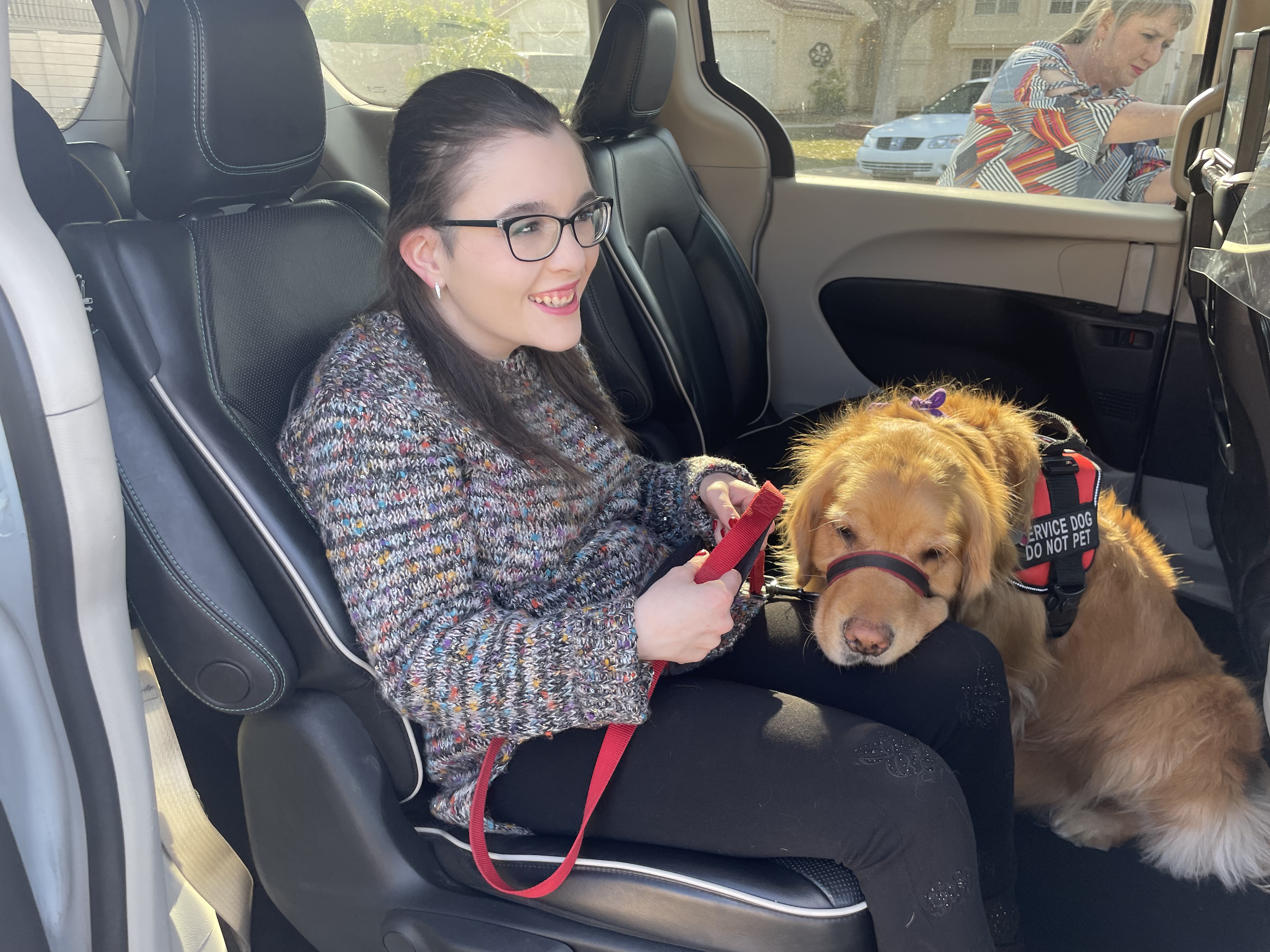
Waymo is working to make sure the technology’s development includes the perspectives of people of all abilities. Launched in 2022, the Waymo Accessibility Network encourages disability advocates to provide feedback throughout the product design process, to improve access and mobility for a diverse set of riders.
Katie says it made her happy to see how the ride with Waymo made a long-lasting impression on Kelley, whose ebullient smile stayed on her face the whole night.
“It was amazing and I know that it really made Kelley's day,” Katie says. “I mean, she still talks about it.”
Katie says her experiences with Best Buddies, and her friendship with Kelley, have fueled her aspirations to continue working with people with disabilities.
“You learn so many new perspectives by interacting with these buddies” says Katie. “You just get to see things outside of your own lens and it's really eye-opening.”
You learn so many new perspectives by interacting with these buddies. You just get to see things outside of your own lens and it's really eye-opening.
When Kelley’s mother asked if she could ride with her and Waymo next time, Kelley’s answer is firm.
“No!”
She wants to ride autonomously with Waymo.
Sign Up
Join us in the most important conversations about how autonomous driving technology may shape the future of safety, mobility, community, and society.

